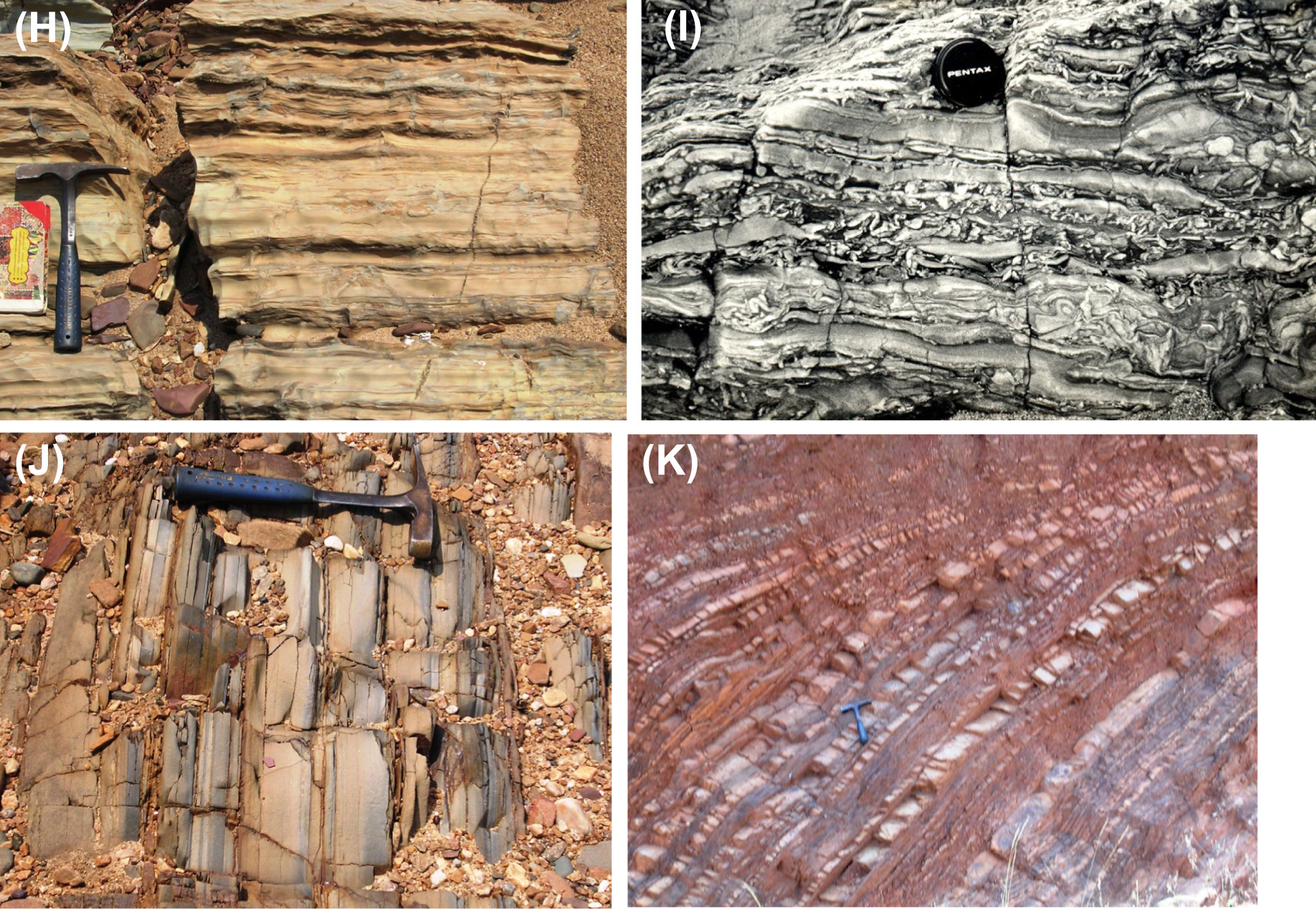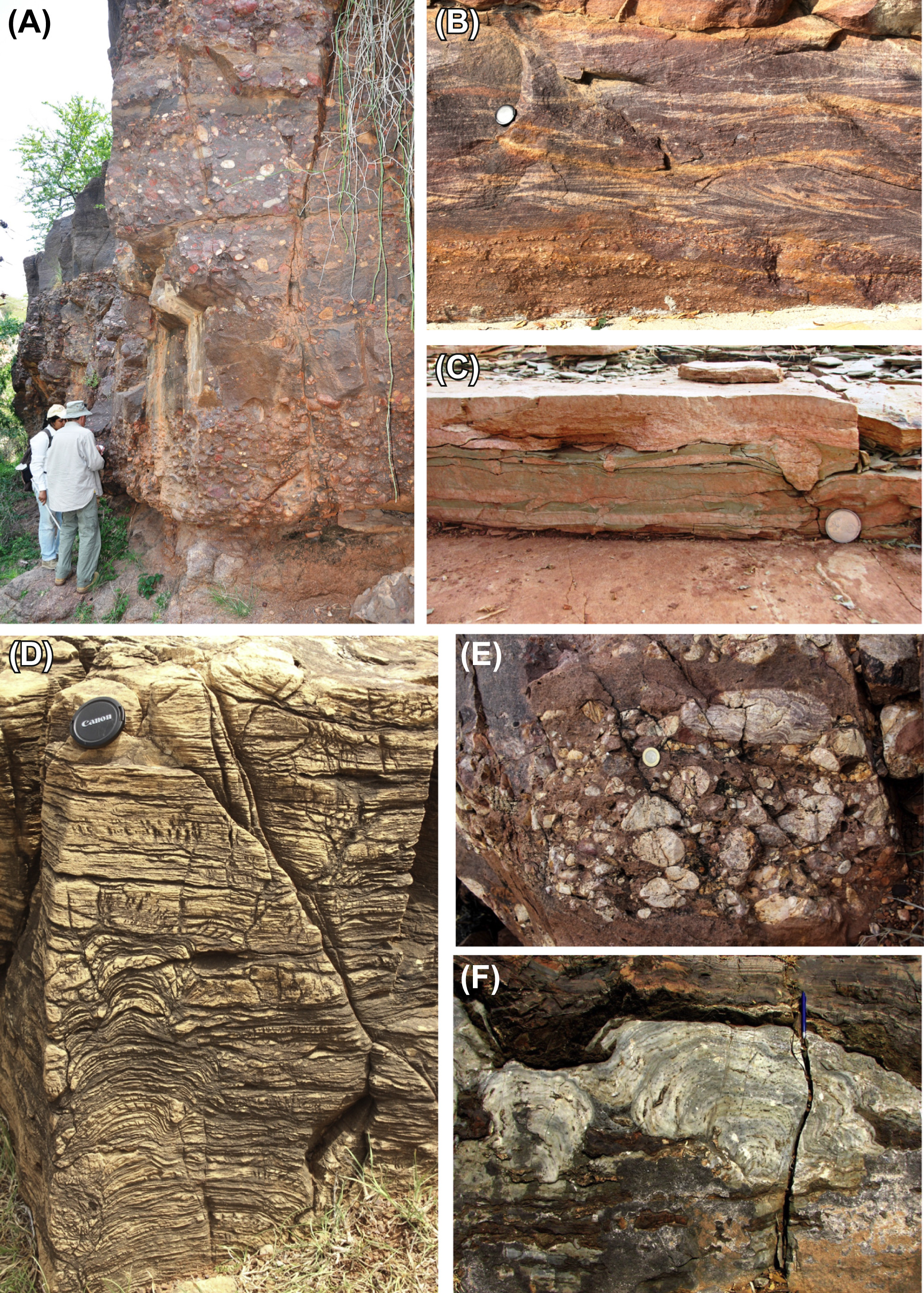Tadpatri Fm
Lithology and Thickness
Marl and Volcanics: Shale, ash-fall tuffs, quartzite, stromatolitic dolomite; with mafic flows, sills and dykes. Heterolithic shale-calcareous sandstonewith dolomitic limestone interbeds constitutes the lower part of the Tadpatri Formation conformably overlying the Pulivendla Quartzite. Although symmetric to asymmetric ripples are common in the sandy units, algal laminite and stromatolitic mound characterize the dolomitic interbeds (Fig. – image F). Sections near Yagantipalle show intercalations of carbonaceous shale within the dolomitic limestone which grades upward into a thick (40e50 m) succession of plane laminated, splintery gray-green shale. Throughout the Papaghni sub-basin, the dolomitic limestone is commonly intruded by up to 4-m-thick dolerite sills with chilled margin and local contact metamorphic effect in the host dolomite (Fig. – image G). Rhyolitic ignimbrites are locally intercalated with silicified dolomite in the uppermost part of the Tadpatri Formation. Stromatolites in the Tadpatri Formation have low amplitude hemispheroidal forms with diameter up to 1 m, or occur as laterally linked hemispheroids.
[Figures: Field photographs showing lithology and sedimentary features in the Papaghni Gr and Chitravati Gr of the Cuddapah Supergroup. Gulcheru Quartzite Fm - (A) basal conglomerate overlying granitic basement off Parnapalli; and (B) pebbly grit grading to rough cross-stratified coarse sandstone. (C) Heterolithic sandstone-shale at Gulcheru Quartzite Fm / Vempalle Fm transition. (D) Vempalle Fm - stromatolitic limestone, (E) Pulivendla Quartzite Fm - basal conglomerate; note silicified stromatolite remnant in a large pebble. Tadpatri Fm - (F) silicified stromatolite (hemispheroidal forms) intercalated with basaltic flow (dark band), and (G) shale with a thick mafic sill. Gandikota Quartzite Fm - (H) plateau forming sheet sandstone, (I) cross-stratified sandstone, and (J) interference ripples. (from Saha et al., 2016)]
Relationships and Distribution
Lower contact
Underlain by Pulivendla Quartzite Fm
Upper contact
Overlain by Gandikota Quartzite Fm with gradual contact.
Regional extent
GeoJSON
Fossils
Age
Depositional setting
Intertidal to subtidal; local tidal channels. The lithofacies association of algal laminite, stromatolite, and rippled fine calcareous sandstone has been interpreted as representing tidal‒subtidal regime of sedimentation. The development of plane laminated thick shale in the middle‒upper part suggest sea-level rise suppressing the carbonate factory
Additional Information

